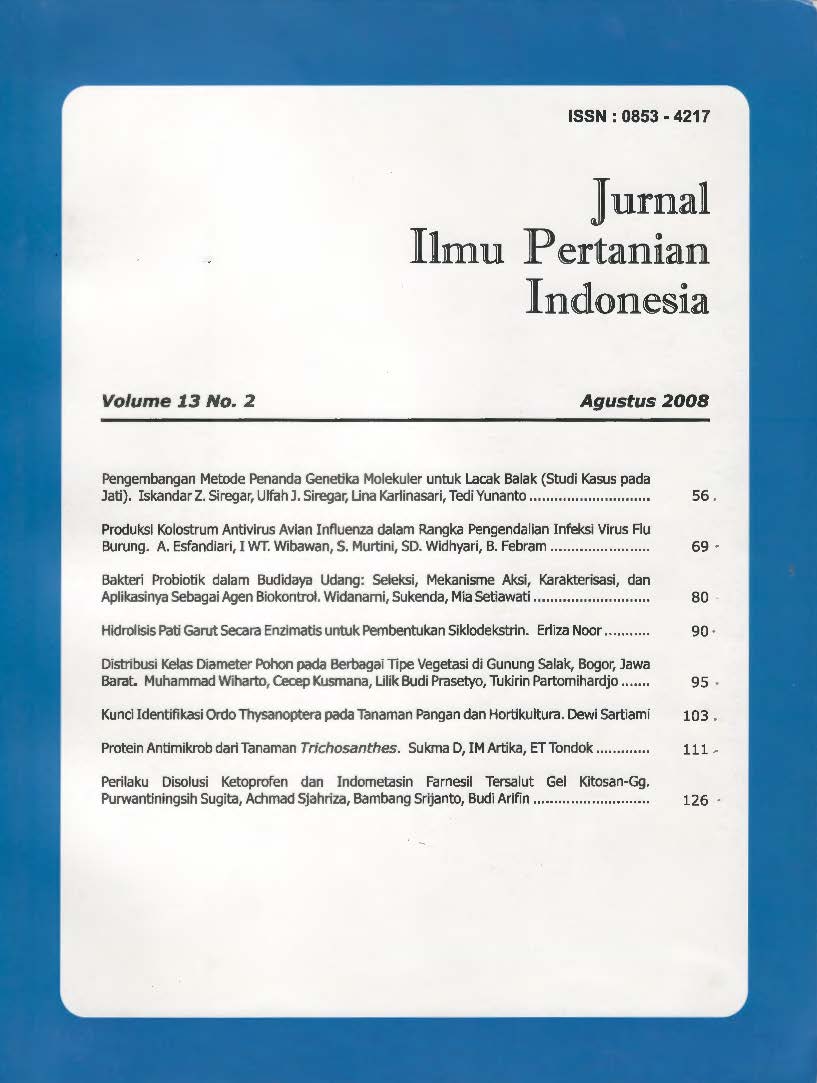Bakteri Probiotik Dalam Budidaya Udang: Seleksi, Mekanisme Aksi, Karakterisasi, dan Aplikasinya Sebagai Agen Biokontrol
Abstract
Bacterial disease attack occurs at the hatchery stage, which is considered to be the most serious threat, and often results in mass mortality of shrimp larvae by vibrosis which is that caused by a luminous bacterium identified as Vibrio harveyi. This research was carried out to obtain local isolates of probiotic bacteria that were able to inhibit the growth of V. harveyi and effectively apply it as a biocontrol of vibriosis in shrimp cultures. The research was carried out as follows: (1) In vitro and in vivo selection of probiotic bacteria candidates, (2) Study of the action mechanism and characterization of the selected pro biotic bacteria, (3) Study on application of the selected probiotic bacteria as a biocontrol agent in shrimp cultures. Results of in vitro and in vivo selection provided the best three isolates, which were 1Ub, SKT-b and Ua. The survival rate of shrimp larvae which were not only inoculated by V. harveyi but also with 1Ub, SKT-b and Ua probiotic bacteria were 88.33, 83.33, and 81.67% respectively; where as the positive control treatment (merely inoculated with V. harveyi) gave a 41.67% survival rate and the negative control (without bacterial addition) was 68.33%. Studies using a rifampicin resistant marker (RfR) demonstrated that the number of V. harveyi MR5339 RfR cells in treatments without probiotic addition were higher than the treatment with the probiotic bacteria, in dead larvae, living larvae, as well as in the culture media. Partial sequencing of the I6S-rRNA gene showed that the I Ub isolate was similar to Pseudoalteromonas piscicida, whereas the SKT -b and Ua isolates were similar to Vibrio alginolyticus. Selected probiotic bacteria could be applied directly to shrimp larva culture media, or orally through enrichment of both natural and artificial food.
Keywords: Penaeus monodon larvae, probiotic bacteria, vibriosis
Downloads
This journal is published under the terms of the Creative Commons Attribution-NonCommercial 4.0 International License. Authors who publish with this journal agree to the following terms: Authors retain copyright and grant the journal right of first publication with the work simultaneously licensed under a Creative Commons Attribution-NonCommercial 4.0 International License. Attribution — You must give appropriate credit, provide a link to the license, and indicate if changes were made. You may do so in any reasonable manner, but not in any way that suggests the licensor endorses you or your use. NonCommercial — You may not use the material for commercial purposes.



















